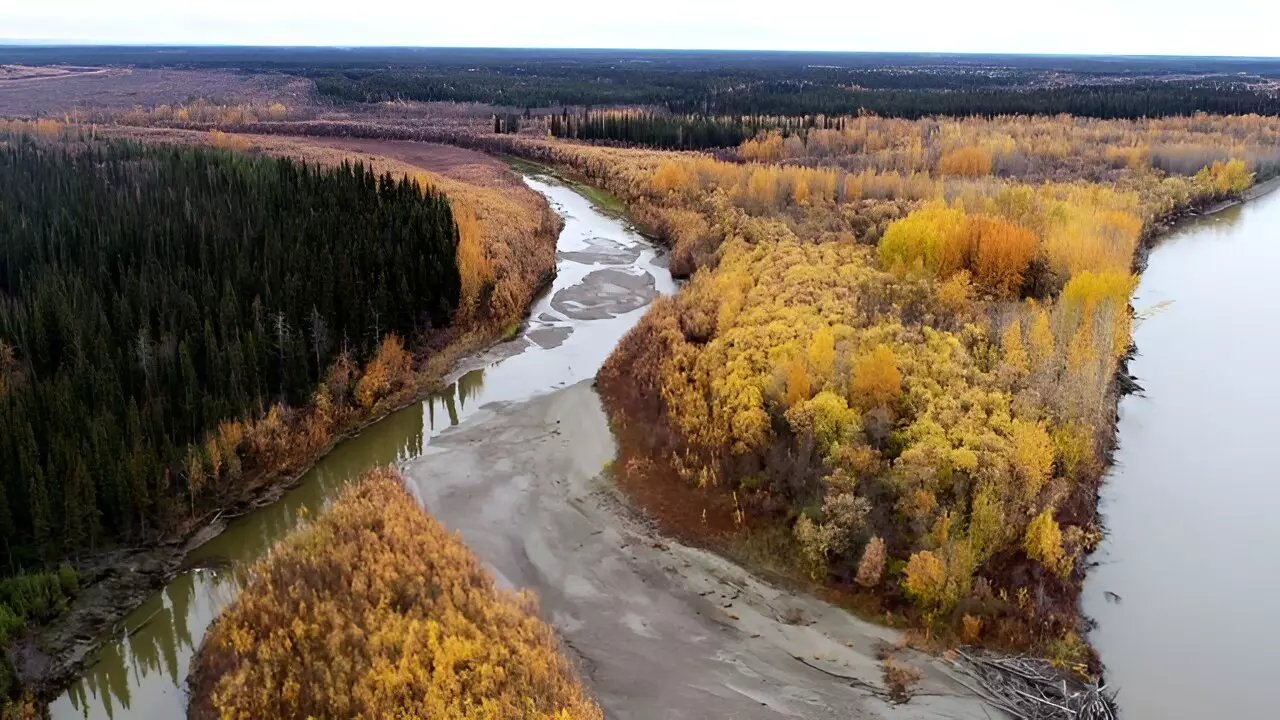In recent years, scientists have raised alarms regarding the rising temperatures in the Arctic, which are accelerating at an alarming rate—up to four times faster than the global average. This phenomenon poses significant risks, not only to the fragile ecosystems inhabiting the region but also to the human communities that rely on them. One of the most critical environmental hazards linked to this warming is the release of mercury contaminants long held within permafrost—subterranean layers of frozen organic material. This article examines a study conducted by researchers at the USC Dornsife College of Letters, Arts and Sciences, which presents innovative methods for measuring mercury levels in the Yukon River and unveils the potential implications for Arctic inhabitants.
Permafrost has served as a long-term reservoir for mercury, a toxic metal that adheres to the soil and is thereby absorbed by plant life. As the permafrost thaws due to rising temperatures, this heavy metal is released and can flow into nearby rivers, creating a hazardous scenario for local fauna and humans alike. Particularly in the Arctic, mercury accumulates in large concentrations—potentially exceeding overall levels found in oceans and soils combined. The melting permafrost essentially acts as a “mercury time bomb,” threatening to release vast quantities of this toxic element into the environment.
The study emphasizes a need for accurate mercury assessments, a need that has intensified in the context of climate change. The research team investigated areas adjacent to the Yukon River, focusing on towns like Beaver and Huslia. Previous estimates relied heavily on core samples taken from the uppermost layers of permafrost, which proved to be inadequate and sometimes misleading due to their variable results. In this new study, researchers diverted their attention to riverbank sediments, which revealed higher concentrations of mercury than previous methodologies had suggested.
In examining sediment samples, the research team utilized deep soil layers through a method that allowed them to quantify mercury levels more effectively. They discovered that finer sediment particles held more mercury compared to coarser grains. This revelation points to specific soil types that may be more prone to releasing high levels of mercury, amplifying the necessity for targeted monitoring and remediation efforts.
Moreover, the researchers employed satellite data to track the dynamic shifts of the Yukon River’s course over time. Understanding how the riverbanks are eroding and how sediments are being redeposited is crucial; it allows for enhanced predictions of mercury movement. This interplay between erosion and deposition provides a more nuanced picture of the risks posed by mercury in changing environmental contexts.
While the immediate environmental threat from mercury released during current permafrost thawing may seem manageable, the accumulating risk over the coming decades is staggering. The primary exposure route for humans remains through dietary sources, particularly through the fish and game that many indigenous communities depend upon for sustenance. The long-term implications of this mercury build-up call for urgent public health considerations, especially as Arctic communities navigate both traditional and contemporary subsistence practices.
It’s important to note that, contrary to scenarios involving urban centers like Flint, Michigan—where drinking water contamination posed an acute crisis—the risk of contamination through Arctic drinking water remains minimal. Most mercury exposure results from the food web and bioaccumulation in commonly consumed species. However, the issue is far more intricate than simply tracking mercury levels; understanding how eroding riverbanks interact with sediment deposition is essential for gauging future risks.
The potential consequences of prolonged exposure to accumulating mercury, especially for vulnerable communities in the Arctic, cannot be understated. As climatic shifts continue and the permafrost continues to thaw, the health impacts on local populations could escalate dramatically, necessitating increased awareness and preventive measures.
In light of the groundbreaking study conducted by the USC Dornsife research team, it is evident that updated methodologies can significantly enhance our understanding of both the environmental and health risks posed by mercury in the Arctic. The tools developed for accurately monitoring mercury levels in sediments can equip scientists and policymakers alike with the knowledge necessary to manage this “mercury bomb.”
As we face an uncertain future shaped by climate change, the importance of interdisciplinary collaboration among researchers, indigenous communities, and environmental organizations is paramount. The time to act is now, not just to diffuse the risks posed by mercury, but to honor and protect the communities that depend on these fragile ecosystems for their way of life. Through heightened awareness and proactive strategies, we can hope to mitigate the potential crisis that looms over the Arctic due to global warming and its cascading effects.


Leave a Reply